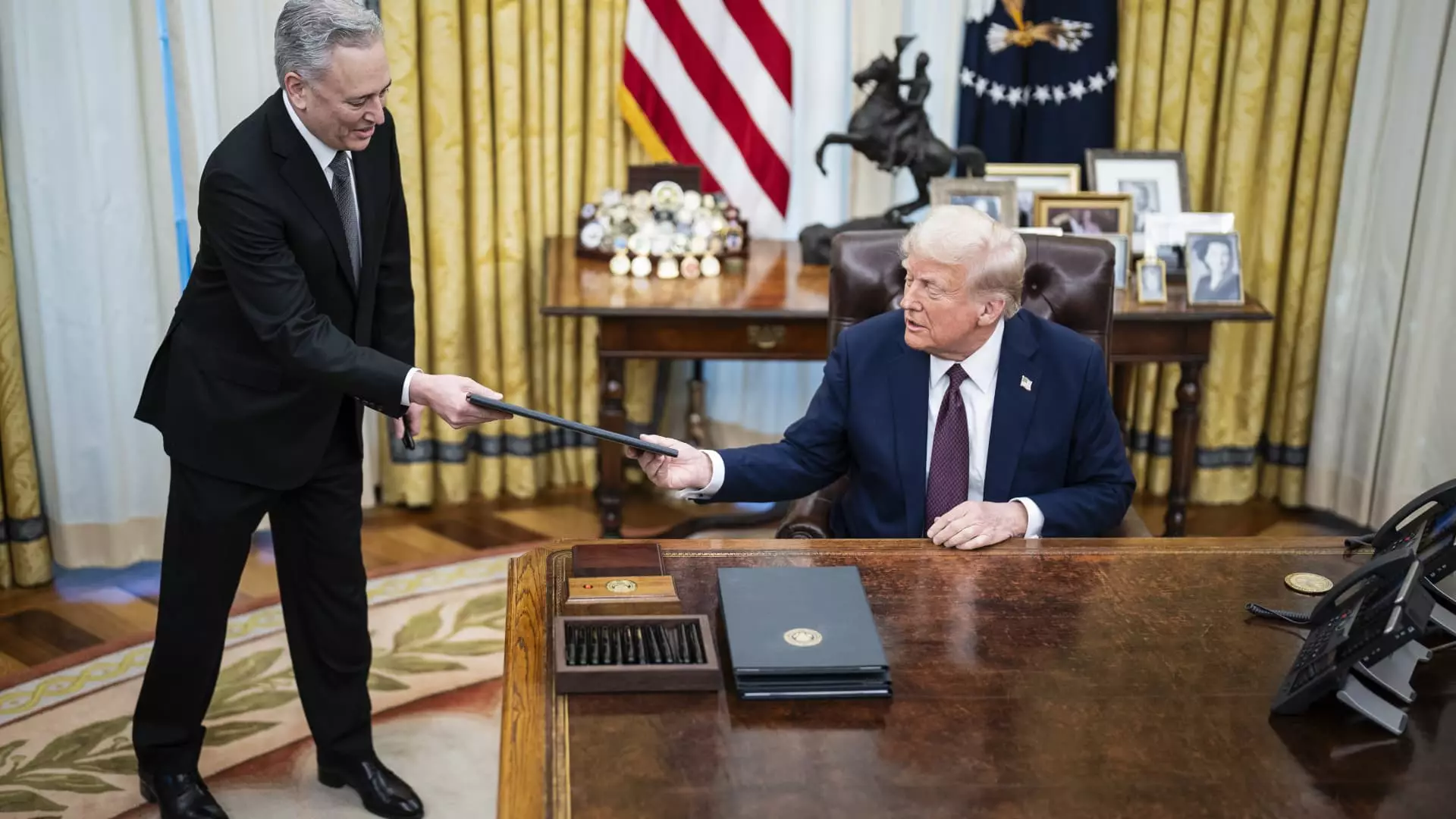The recent executive order signed by former President Donald Trump, creating a Strategic Bitcoin Reserve, represents a bold and audacious deviation from traditional monetary policy. This move doesn’t merely add a digital asset to the U.S. financial repertoire; it redefines the entire approach to national assets in the digital age. With around 200,000 bitcoins under the government’s control—though unverified due to a glaring lack of comprehensive audits—this initiative could herald a new era of financial stability and strategic planning in an increasingly unpredictable global economy.
Trump’s vision, as articulated by White House Crypto and AI Czar David Sacks, is underpinned by an acute understanding of both market dynamics and the political landscapes that govern them. Unlike past fiscal strategies that relied heavily on taxpayer contributions, this mandate ensures that the reserve is built solely on assets obtained through civil and criminal forfeiture. This paradigm, if executed well, can uphold fiscal responsibility while simultaneously advancing the U.S. as a leader in digital asset management.
Establishing Bitcoin as a Global Asset
Prominent voices within the crypto community resonate with the notion that a Bitcoin-centric reserve legitimizes the cryptocurrency as a serious asset class akin to gold. Nic Carter from Castle Island Ventures articulated that the U.S.’s endorsement will elevate Bitcoin’s status in global markets. This assertion carries weight; a country as influential as the United States giving its nod of approval could shift perceptions and potentially drive up the asset’s value significantly. The implications extend beyond mere recognition; they could redefine global monetary standards as Bitcoin begins to be seen as a legitimate alternative to traditional fiat.
One issue that arises, however, is Trump’s suggestion to include a range of digital currencies—like ether, XRP, and Solana—in this strategic reserve. While such inclusivity appears progressive, it risks diluting Bitcoin’s status as the leading digital asset. Tyler Winklevoss, often celebrated as a quintessential Bitcoin advocate, expressed this concern succinctly. If the U.S. wants to assert a strong Bitcoin signal, a singular focus on it as an exceptional asset is paramount.
The Cautionary Approach: Strategy Over Speculation
Fintech investor Ryan Gilbert’s warning that the U.S. must exercise caution in managing this reserve reflects a broader principle of asset stewardship. A reserve is intended to be a long-term stabilizer, not a fleeting speculative venture. The imperative here is clear: adopting a conservative approach that encourages Bitcoin ownership while avoiding active trading can bolster confidence over time.
By positioning Bitcoin as a store of value, the U.S. could potentially shield itself from the volatile whims of cryptocurrency trading. Emerging from years of chaos in the crypto markets, a steady and deliberate approach could set the U.S. apart as a beacon of financial prudence—something the world desperately needs as it becomes more enmeshed in digital assets.
The Road Ahead: Institutional Confidence or Institutional Discontent?
The establishment of a Digital Asset Stockpile managed by the Treasury Department is a call for further commitment to transparency and accountability—a rarity in governmental actions associated with cryptocurrencies. As insulation from speculation becomes a priority, clarity regarding the protocols for fortifying the reserve will significantly impact institutional confidence in the market.
Yet, while there exists enthusiasm among supporters, apprehension lingers. Institutional investors may consider such a reserve a double-edged sword. The belief that the government is involved in digital assets can both reassure and intimidate investors looking for stability. Therefore, how the U.S. communicates its strategy and manages its assets will be critical in shaping the narrative surrounding this initiative.
Ultimately, Trump’s Strategic Bitcoin Reserve carries substantial implications for American finance and the future of digital currency on the global stage. By focusing strictly on Bitcoin, the U.S. could claim a place of leadership in a landscape laden with uncertainty—a defining pivot that, if done meticulously, could secure its status as a financial superpower in the digital age. Embracing Bitcoin as a serious national asset is not merely an audacious move; it is a necessary step in an evolving world that increasingly requires visionary leadership in finance.

